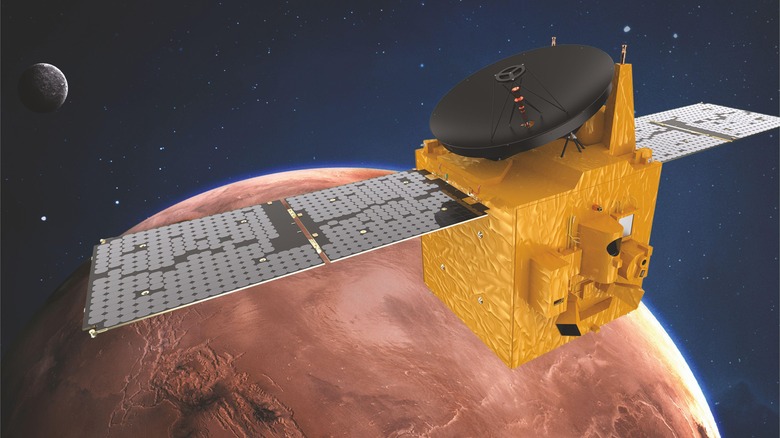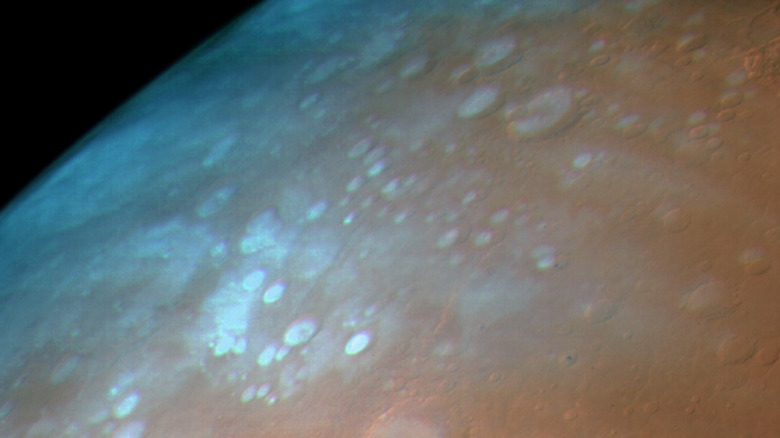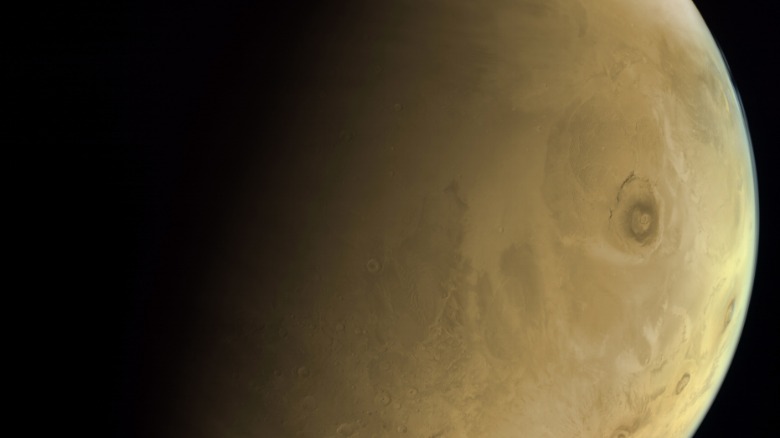The Mars Hope Mission Earned Its Name
The United Arab Emirates's Hope mission to Mars celebrated its one-year anniversary this week, having arrived in Mars orbit on February 9, 2021. The Hope spacecraft has been collecting data about Mars's weather, topology, and more in the last year, having made history as the first interplanetary mission by an Arab country.
Since its arrival at Mars, the Hope probe has made 170 orbits of Mars, passing around the planet every 55 hours. According to a statement from the UAE, it has gathered almost 2 terabytes of data in that time, including batches of images of Mars taken using its Emirates Exploration Imager (EXI) camera.
Some of the highlights of the mission's scientific findings include the observations of water-ice clouds captured on March 16, 2021, taken over the Arabia Terra region. Even though there is almost no liquid water on the surface of Mars, there is some water vapor in the Mars atmosphere, and this vapor can freeze into ice and form cloud structures.
Another image captured by the EXI camera over the same Arabia Terra region showed water-ice clouds forming a ground fog in some of the craters which dot the surface of Mars, caused by impacts in the distant past. The large swings in temperature on the Martian surface, which can get very cold during the night, allow hazes of water-ice cloud to form within craters which dissipate when the sun comes up.
Martian weather observed from above
Other findings from Hope relate to the Martian weather. Understanding the weather on Mars is important both for reasons of planetary science, and for the practical purposes of landing spacecraft there. The amount of dust in the atmosphere, for example, can have an impact on how to land explorers like NASA's Perseverance rover or future crewed missions.
By observing from orbit, Hope was able to see temperature variations in the Martian atmosphere using its Emirates Mars Infrared Spectrometer (EMIRS) instrument, seeing how the atmosphere warmed and moved across a morning on July 19, 2021.
It also used its EXI camera once again to view a massive dust storm building in Mars's southern hemisphere on January 5, 2022. This dust storm affected two missions currently on the surface – NASA's Perseverance rover and its InSight landed.
"On 7 January 2022, dust lofted into the Martian atmosphere by these storms significantly reduced the sunlight reaching the solar-powered InSight – forcing the spacecraft to enter a protective safe mode and to suspend all but essential functions," UAE scientists wrote. "The skies had cleared sufficiently by 19 January 2022 for InSight to resume normal operations. As Mars approaches southern spring, dust storm activity typically becomes more likely, leading to increasing amounts of dust suspended in the atmosphere. The EMM mission will be a valuable orbiting asset to document the location and evolution of dust storms occurring across the planet!"
Above you'll see another example of a photo captured by the Hope Probe. This image shows a view of Olympus Mons, the tallest volcano in the solar system, captured with the Emirates eXploration Imager (EXI) at 9:33 UTC on February 26th from an altitude of 13,007 km. The Hope Probe is expected to continue to operate at least one more year, if not more. The current official schedule suggests it'll operate until mid-2023, with a potential extension of up to one more Martian year (approximately two Earth years).


